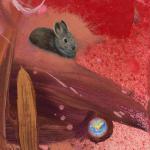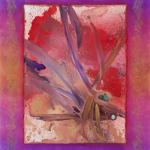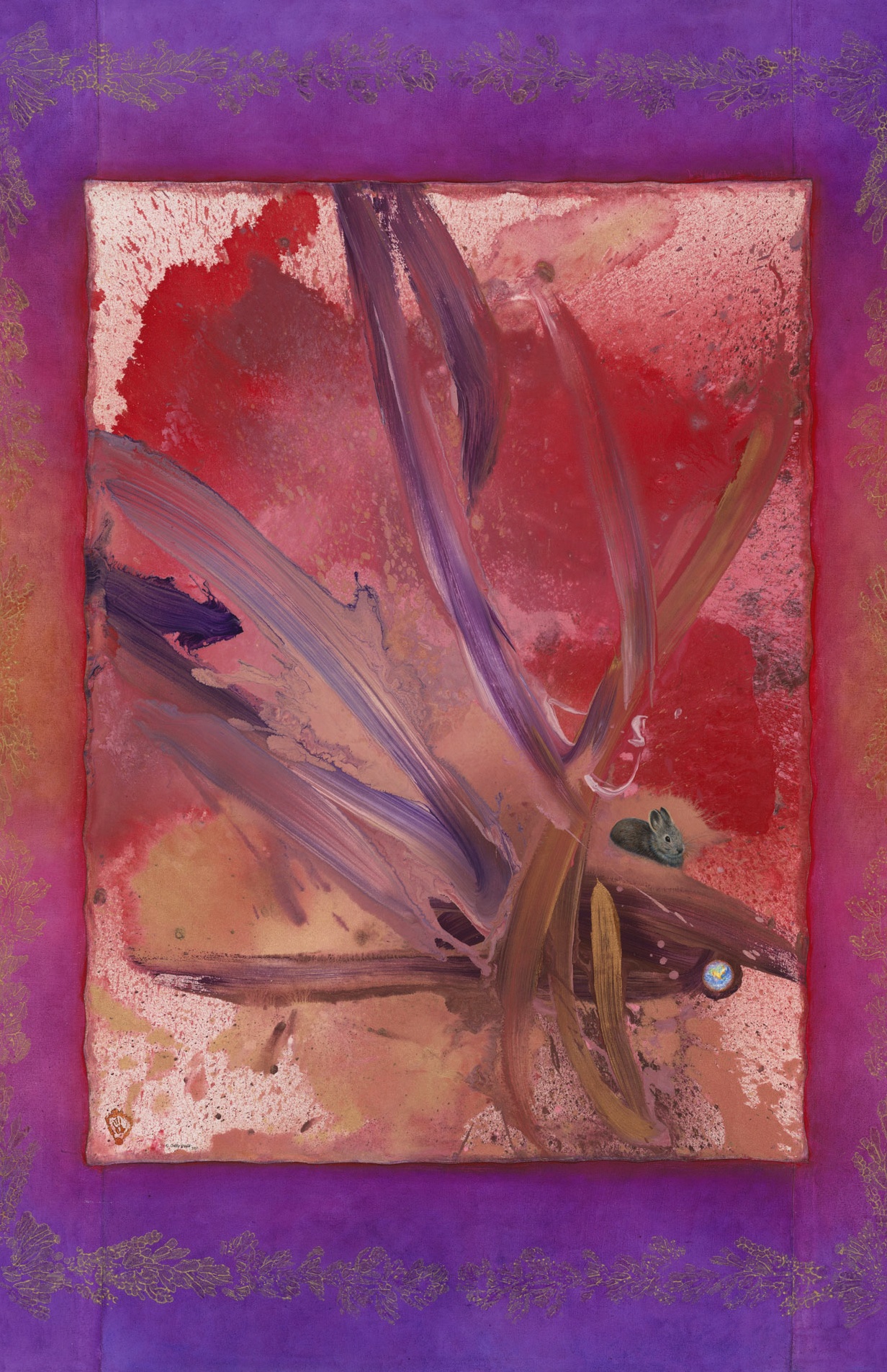An International Traveling Exhibition
by Calley O'Neill and the Rama Team, Featuring Rama, the Artist Elephant
A JOURNEY OF ART AND SOUL FOR THE EARTH
RAMA: AMBASSADOR FOR THE ENDANGERED ONES
Speaking Passionately on Behalf of Those who Cannot Speak
by Calley O’Neill and Rama the Elephant with Jeb Barsh
WASHINGTON PYGMY RABBIT (BRACHYLAGUS IDAHOENSIS)
STATUS: Endangered, Federal and Washington State listing
The Columbia River Basin population in Washington is known to be endangered.
During the winter, 99% of the pygmy rabbit’s diet consists of sagebrush. It is the loss of the sagebrush habitat due to cattle grazing and conversion of land to farming in parts of Washington, Oregon, and Idaho, which has led to the serious decline of this species. Despite the best efforts of the Oregon Zoo, Washington State University, NW Trek Wildlife Park and others, captive breeding efforts have not been very successful.
After having become nearly extinct in the wild, thanks to the Oregon Zoo’s, the Washington Department of Fish and Wildlife’s, US Department of Fish and Wildlife and other organizations’ breeding and reintroduction program, Washington Pygmy Rabbits may be starting to repopulate their traditional range.
In 2002, the last 16 rabbits in the wild were captured and placed in a captive breeding program at the Oregon Zoo, Washington State University and Northwest Trek Wildlife Park. In 2003, the Oregon Zoo became the only zoo in the world to successfully breed pygmy rabbits. In 2004 these rabbits were crossbred with wild Idaho pygmy rabbits to strengthen the Columbia basin gene pool and accelerate reproduction. After the successful introduction of 93 rabbits to the Sagebrush Flat Wildlife Area in 2007 in central Washington, by fall 2007, none of them remained in the wild. Some were recaptured, and others fell victim to predators. In 2001, over 50 rabbits that had been implanted with microchips or radio collars were released within a wire enclosure in a 10-acre nature refuge. This smaller protected area encouraged mating and prevented predation. For the first time in a decade the Columbia basin rabbits successfully bred. This is the first success of its kind since 2004.
The pygmy rabbit is the only burrowing rabbit in the US and one of two in North America. The size of a teacup, at one pound for an adult, this is the world’s smallest rabbit.
They thrive in dense stands of sagebrush (Artemisia tridentate) and loose soil, eating mostly sagebrush leaves. Over the last 160 years, sagebrush-covered lands have been converted to agricultural use or ranching. The brush lands were planted to an introduced bunch grass to improve livestock forage. They have been subject to disease, wildfires and predation by raptors, coyotes, and weasels.
RETURNING TO THE WILD: THE WASHINGTON PYGMY RABBIT
 | ||||













